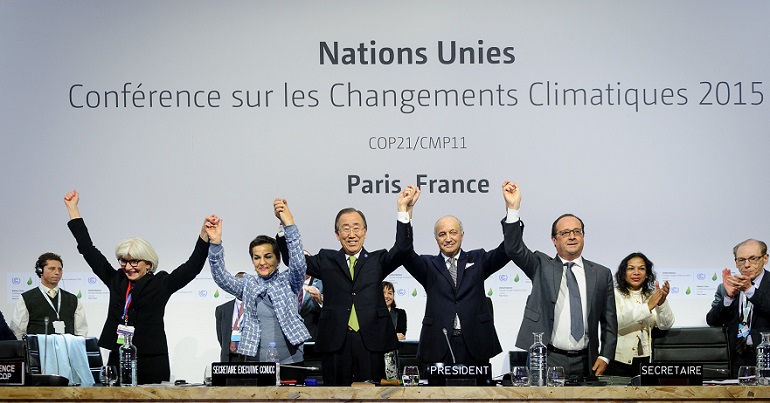What to make of today's UN arms trade treaty
by Daniel Lee
I’ve just returned from New York, where in July and for the last two weeks I’ve been working with Control Arms to campaign for a strong and robust Arms Trade Treaty. I just about managed to get home in time to watch as history was made in the UN General Assembly. A huge majority, 153 states, voted to adopt an Arms Trade Treaty (ATT), heralding the first internationally binding set of regulations on the trade and transfer of conventional arms. Only Syria, Iran and the DPRK voted against, with 23 abstentions (although some of these appear to have been a mistake). But what does it all mean?
It isn’t really necessary to explain here why the shocking gap in regulation that the arms trade had enjoyed needed addressing. The arms trade fuels death, murder, war, corruption and more, hindering development, both human and otherwise, around the world. Up until today there have been no internationally binding regulations on the trade in conventional arms. No regulation of arms exports, imports, brokering. No regulation of fighter jets, aircraft carriers, or AK47s. States have had varying national standards, or none at all. There are regional agreements, such as within the European Union and ECOWAS, and others such as the Wassenaar Arrangement, but none of these were explicitly binding nor covered all countries. The Arms Trade Treaty (ATT) is different for this reason.
The ATT creates a floor which all states need to ensure their regulations meet, at a minimum.The ATT agreed today covers most but not all conventional arms. Everything from warships down to rifles and handguns are covered under the scope, but due to the definitions used, certain categories are arbitrarily left out, as well as more recent developments, such as drones.
Ammunition and parts and components are also covered, though not as fully as full weapons themselves. It covers most forms of transfer, though does leave out certain practices such as gifts and loans, something China is a big fan of. Crucially though, it sets prohibitions, including that states must not transfer arms if there is knowledge that they will breach international humanitarian and human rights law (IHL and IHRL). It also emphasises further assessment criteria, such as to prevent gender-based violence as a consequence of the transfer. No previous agreement had done this.
Much of the burden falls on exporting states to properly assess their exports. There is a reporting mechanism, but no strictly set out set consequences as to what happens when states breach the terms of the Treaty. Even so, there will now be international law, whether a state ratifies or not, that can be used and referred to when states such as Russia continue to arm Syria despite huge breaches of international humanitarian law. Irrespective of the application, for now this is a huge leap forward.
The Arms Trade Treaty is of course not perfect, as any treaty largely born out a process of consensus will be (and especially the UN’s particular interpretation of this decision making method). As many states said during the negotiations, it should at least be a floor for states, above which most states should aim to go much higher. There are important limitations that it will be crucial to address down the line in future amendments. Within the scope, the definitions should be widened to make sure the Treaty fully covers ammunition, parts, and all weapons, now and into the future. Other important amendments should include strengthening the language on prohibitions, which currently only prohibit states to transfer in light of an “overriding” risk of a breach of International Humanitarian Law and International Human Rights Law. A huge number of states wanted to see the word replaced with “substantial”.
So we have a Treaty now, but where do we go from here? The next step is for states to ratify. The Treaty will open for ratification on the 3rd June, and 50 states need to ratify before the Treaty enters into force. On past experience, this should take up to 4 years, though the EU alone will take us half way to that goal. As things stand, with 153 votes for, this shouldn’t be hard, though getting major exporters (and importers) on board may take longer. The UK and France and other EU states will likely ratify quickly, but the USA is likely to see a close fight in the Senate. Russia and China both had concerns and abstained, as did India and Saudi Arabia, and it remains to be seen if anything will change their minds in the near future. After this, the real work will really begin. States will need to implement the Treaty, and it will be up to everyone to ensure they do so promptly and properly, especially as the implementation will set important precedents that could affect future application of the Treaty. At the same time, we will also need to strengthen the Treaty from its current form via the amendment process.
The ATT is certainly not the end of campaigning on the arms trade, not even for those that worked to achieve it. The ATT should do some good in the long-run, and provide more transparency, but the arms trade will still destroy lives every day, and an ideal world will see its elimination entirely. But to do so the reasons that states and others demand arms need to be addressed, which is a much wider issue. In the mean time, there will be many who, rightly, vociferously oppose and campaign against the trade, and others who will be working to ensure the rapid ratification, implementation, and ultimately strengthening of the ATT.




This is a good blog; really it helped me to enhance my knowledge about jets planes.The information is apt and well written, thanks for sharing. You can even check out our website for some new information on jets planes.